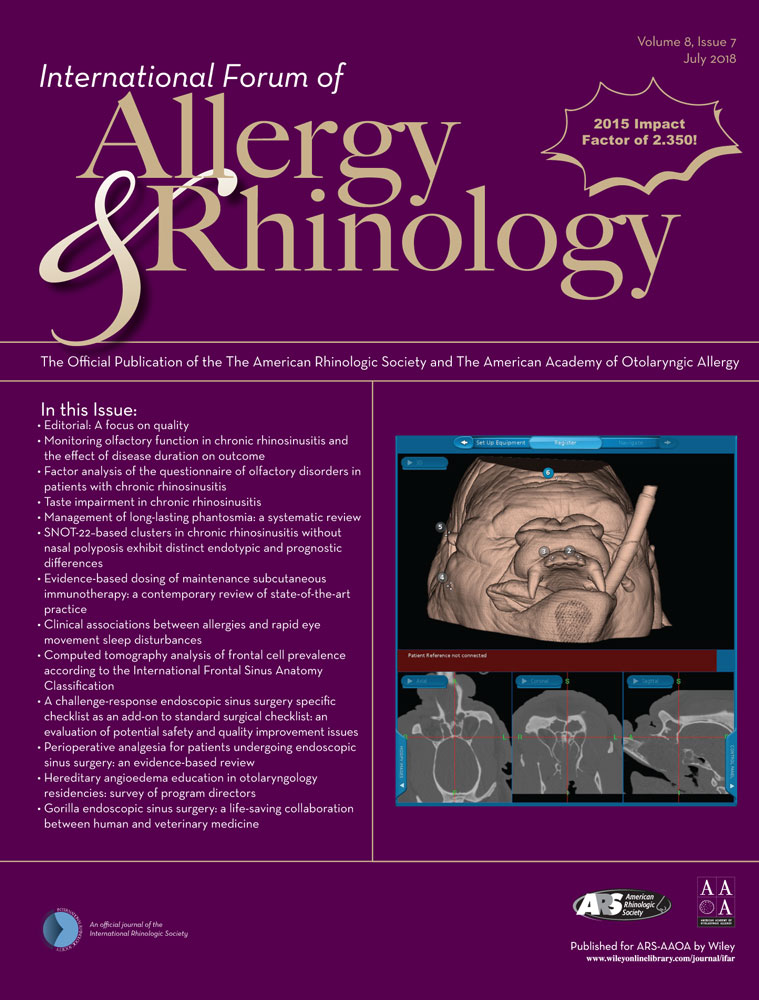Computed tomography analysis of frontal cell prevalence according to the International Frontal Sinus Anatomy Classification
Potential conflicts of interest: P.H.H., consultant for Olympus, 480 Biomedical, Bioinspire, Arrinex, and Sinuwave.
View this article online at wileyonlinelibrary.com.
Abstract
Background
The International Frontal Sinus Anatomy Classification (IFAC) is an international consensus document published in 2016 to standardize the nomenclature of cells in the region of the frontal recess and frontal sinus. The IFAC was designed to be surgically relevant and anatomically precise. The current study was undertaken to assess the prevalence of the frontal cell variants as defined by the IFAC, as well as to determine the interrater reliability of the IFAC.
Methods
Three independent reviewers examined triplanar nondiseased maxillofacial computed tomography (CT) scans to assess the anatomy of the frontal recess according to the IFAC system. The prevalence of each cell type was assessed and interrater reliability was measured using an intraclass correlation coefficient (ICC).
Results
One hundred CT scans (200 sides) were examined. Of the 200 sides, 96.5% contained an agger nasi cell (ICC, 0.82; 95% confidence interval [CI], 0.77-0.86), 30.0% contained a supra agger cell (ICC, 0.89; 95% CI, 0.86-0.92), 20.0% contained a supra agger frontal cell (ICC 0.80; 95% CI 0.74-0.84), 72.0% contained a supra bulla cell (ICC, 0.81; 95% CI, 0.76-0.85), 5.5% contained a supra bulla frontal cell (ICC, 0.71; 95% CI, 0.63-0.77), 28.5% contained a supraorbital ethmoid cell (ICC, 0.78; 95% CI, 0.72-0.83), and 30.0% contained a frontal septal cell (ICC, 0.80; 95% CI, 0.74-0.84). The ICC was good to excellent for identification of all frontal cell types.
Conclusions
This study describes the normative distribution of frontal recess cells in a nondiseased population according to IFAC and demonstrates favorable interrater reliability of the classification system.




